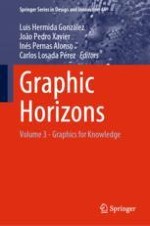2024 | OriginalPaper | Buchkapitel
An Analysis of Knowledge Production in Architectural Graphic Ideation Applied to Railway Architecture
verfasst von : Ana Rute Faísca, Pedro Gomes Januário
Erschienen in: Graphic Horizons
Verlag: Springer Nature Switzerland
Aktivieren Sie unsere intelligente Suche, um passende Fachinhalte oder Patente zu finden.
Wählen Sie Textabschnitte aus um mit Künstlicher Intelligenz passenden Patente zu finden. powered by
Markieren Sie Textabschnitte, um KI-gestützt weitere passende Inhalte zu finden. powered by
